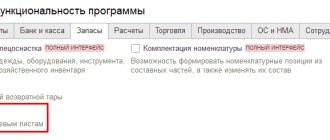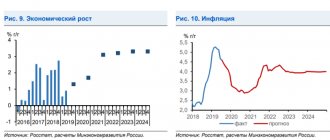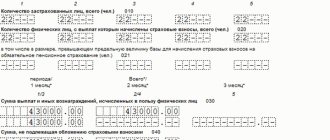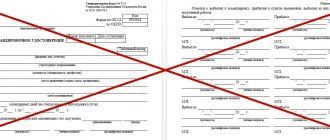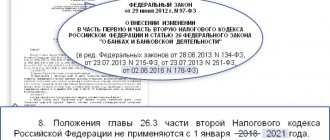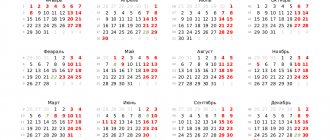Fuel consumption standards are indicators approved annually by the Ministry of Transport of the Russian Federation. Almost every second organization faces the write-off of fuel and lubricants: even companies that are not involved in transportation, as a rule, have vehicles on their balance sheet or rent them. The question inevitably arises: how to take into account the costs of writing off gasoline and other fuels and lubricants. Explanations from regulatory authorities are contradictory and change frequently. We will show you how to calculate the standards, tell you what regulations currently regulate this issue and what tax authorities are now saying about accounting for such costs.
The concept of fuel and lubricants standards
Fuel consumption on company vehicles cannot occur uncontrollably and irregularly, otherwise overexpenditures and possibly even waste cannot be avoided. To control and account for the amount of fuel and lubricants, the concept of fuel consumption rate - an economically sound indicator that reflects the average need for fuel (gasoline, gas, diesel fuel) for various types of service vehicles for a certain mileage.
The generally accepted and most convenient method is to calculate fuel consumption per 100 km.
How to take into account standards in waybills
If an enterprise uses a car only for production needs, and at the same time is not a transport organization, it can independently develop forms of waybills, keeping the required details in them.
In the case of using cars with LPG, this will be very important, since in any case gasoline is used to start the engine in such cars. In addition, the second type of fuel can be used in other cases:
- entry into the repair area;
- warming up the engine in winter;
- other emergency situations, for example, the car needs to get to a gas station, when the main fuel has run out, etc.
The waybill must display separately gasoline consumption and gas use. You can supplement the approved waybill form so that it reflects both types of fuel. To do this, the document provides additional information:
- Technical characteristics of gas equipment;
- Volume of the gas tank (along with gasoline), etc.
A self-developed waybill form must be approved by an internal local document.
Who sets the standards for fuels and lubricants?
The Ministry of Transport of the Russian Federation gives recommendations on fuel rationing. However, they have remained unchanged since 2015 (the latest order of the Ministry of Transport of the Russian Federation regarding fuel standards No. AM-23-r is dated July 14, 2015), which does not fully reflect the current situation today.
The Ministry of Finance of the Russian Federation made an official clarification on this matter: Letter No. 03-03-06/1/48789 dated August 19, 2021 states that following the standards established by the Ministry of Transport is a right, not an obligation, of an entrepreneur. Tax authorities do not have the right to insist on compliance with these particular indicators when writing off fuel and lubricants.
the write-off of fuel and lubricants in excess of established standards in the accounting records of an organization ?
Fuel consumption and write-off standards in force for each specific company must be adopted, approved and recorded in internal documentation.
NOTE! For motor transport companies, unlike other legal entities and entrepreneurs, accounting for fuel costs according to the recommendations of the Ministry of Transport is mandatory.
Other types of allowances to basic standards
In addition to seasonal operating conditions, the order AM-23-r establishes the following reasons for increasing the basic tariffs for the consumption of fuel and lubricants:
- work in mountainous areas (from 5 to 20%);
- operation in populated areas with a large population (from 5 to 35%);
- driving at a reduced speed (for example, at a speed below 20 km/h - up to 35%);
- operation over 5 years and mileage over 100,000 km (5%), over 8 years and 150,000 km (10%);
- use of air conditioning (up to 10%).
Basic standards may be lowered. For example, when operating on flat terrain outside populated areas.
Accounting for fuel and lubricants standards
IMPORTANT! A sample of filling out a fuel write-off report from ConsultantPlus is available here
When drawing up a balance sheet, the accountant enters the fuel consumption indicator for write-off:
- in the column “Material expenses”, if the quantity fits into the standards established by the enterprise;
- partially - in the column “Non-operating expenses”, if the spent fuel and lubricants exceed the limits (the amount that exceeds the norm is entered in this column).
For this purpose, account 10 “Fixed assets” with the corresponding subaccounts is used.
The supporting document on the basis of which the calculation of actually consumed fuel is made is a waybill , the form of which the enterprise is allowed to develop independently, as well as coupons, checks, certificates, etc., confirming the purchase of fuel at a certain price.
How to record the write-off of fuel (fuel) purchased in cash ?
Additional types of standards
In addition to the basic norm, the Ministry of Transport introduces concepts such as:
- Transport norm. It is based on a basic indicator of the use of fuel and lubricants, taking into account the influence of the transported cargo (weight, presence of a trailer or passengers). An example would be the difference in fuel consumption between a loaded vehicle pulling a massive trailer and when driving an empty dump truck.
- Operating standard. It can be based on both basic and transport values, taking into account the characteristics of vehicle operation in a given area, climatic conditions, etc. For example, when driving on winding roads, serpentines, when you constantly have to slow down, much more fuel is used than on straight sections of the route. Also, when operating an air conditioner or heater, additional fuel is required, which changes the performance.
The use of these standards allows you not to recalculate the basic values each time, but to use adjusted data for certain conditions, specifics or terrain. It becomes possible to reduce calculations and eliminate the possibility of errors.
In the event of changes or the appearance of additional specific factors affecting the amount of fuel consumption, these standards can be recalculated and adjusted, but all changes must be economically and technically justified, otherwise tax inspectors will have questions and doubts about the reliability of the proposed data.
The value of correction factors is regulated by the Ministry of Transport, expressed as a percentage of the base value and approved by order of the enterprise management.
The use of standardized fuel consumption values makes it possible to simplify reporting, justify the amount of fuel written off, and also reduce the risk of abuse.
Existing coefficients that take into account the operating conditions of engines, the presence of additional equipment, distances or complexity of operation make it possible to fairly fully reflect existing fuel consumption, excluding the possibility of inappropriate costs or overruns.
It is noteworthy that it is not necessary to use standard values in reporting; it is allowed to use actual values, but for this you will have to have supporting documents - checks, receipt stubs, etc. — that is, all documents that can justify the consumption and write-off of fuel.
For small companies that do not have many cars, this option may be more profitable.
In any case, the method of reporting on fuel consumption is the choice of management and accountant; the tax code does not regulate this issue too tightly. The main task seems to be the accuracy and validity of the write-off of materials.
What determines the value of the fuel and lubricants indicator?
Recommended by the Ministry of Transport of the Russian Federation or independently developed by the enterprise, fuel write-off standards depend on objective factors:
- type of transport (passenger car, truck, truck, special purpose vehicle, etc.);
- specific car brand;
- its mileage;
- the period during which the car is in operation;
- basic fuel consumption;
- some established coefficients - seasonal, territorial, road, load-lifting, etc.
Motor transport - rules, norms, regulations
Surcharges to fuel consumption standards.
1. Methodological recommendations “Standards for the consumption of fuels and lubricants in road transport”, approved by Order of the Ministry of Transport of the Russian Federation No. AM-23-r dated March 14, 2008, provide for an increase or decrease in fuel consumption rates depending on the operating conditions of the vehicle.
2. Taking into account road transport, climatic and other operational factors that change the fuel consumption rate is carried out using correction factors (surcharges) , regulated in the form of percentage increases or decreases in the initial value of the standard (their values are established by order or order of the management of the enterprise operating the vehicle, or local administration).
3. Fuel consumption rates can be reduced when working on public roads of categories I, II and III outside the suburban area on flat, slightly hilly terrain (altitude up to 300 meters above sea level) - up to 15%. (one case of decline).
4. In the case when vehicles are operated in a suburban area outside the city boundaries, correction (urban) coefficients are not applied.
5. If it is necessary to apply several surcharges simultaneously, the fuel consumption rate is established taking into account the sum or difference of these surcharges.
6. Consumption rates increase under the following conditions:
a) the operation of vehicles in the winter season, depending on the climatic regions of the country - from 5 to 20% inclusive. The procedure for application, values and validity periods of winter allowances are presented in Appendix 2 of the above guidelines.
Example: the validity period of winter allowances in one of the regions of Russia is 5 months. The administration of a region, city, district, settlement, by its order, can establish the validity period of allowances for the months of the winter period at a single maximum value (for example, 10% for November, December, January, February, March) or differentiated for each month. If there is no order from the administration, then the enterprise (organization) by its order establishes winter allowances independently.
b) the operation of vehicles on public roads of categories I, II and III (roads with improved surface) in mountainous areas, including cities, towns and suburban areas, at an altitude above sea level:
– from 300 to 800 meters – up to 5% (lower mountains);
– from 801 to 2000 meters – up to 10% (mid-mountain);
– from 2001 to 3000 meters – up to 15% (high mountains);
– over 3000 meters – up to 20% (high mountains).
c) the operation of vehicles on public roads (I, II and III categories) with a complex layout, outside cities and suburban areas, where on average there are more than five curves with a radius of less than 40 m per 1 km of road (or per 100 km of road - about 500 turns) - up to 10%, on public roads of categories IV and V - up to 30%.
Category IV includes roads with a hard surface made of cobblestones and gravel, category V includes profiled roads that do not have a hard surface (running on natural soil).
d) the operation of motor transport in cities with the population:
– over 5 million people – up to 35%;
– from 1.0 to 5.0 million people – up to 25%;
– from 250 thousand to 1.0 million people – up to 15%;
– from 100 to 250 thousand people – up to 10%;
– up to 100 thousand people – in cities, towns and other large populated areas (if there are controlled intersections, traffic lights or other traffic signs) – up to 5%.
e) operation of vehicles during frequent technological stops associated with loading and unloading, boarding and disembarking passengers, including route taxis - buses, passenger-and-passenger and small-class trucks, pickup trucks, station wagons, including transportation of products and small cargo, mailbox servicing, money collection, servicing pensioners, disabled people, sick people, etc. (provided on average there is more than one stop per kilometer of travel, while stops at traffic lights, intersections, and crossings are not taken into account) - up to 10%;
e) transportation of non-standard, large-sized, heavy, dangerous cargo, cargo in glass, etc., movement in convoys and accompanied, and other similar cases with a reduced vehicle speed of 20-40 km/h - up to 15%, with a reduced average speed below 20 km/h – up to 35%;
g) when running in new cars and those that have undergone major repairs (mileage is determined by the manufacturer of the equipment) - up to 10%; In the case of centralized transportation of cars under their own power in a single state or in a convoy - up to 10%; when hauling - towing vehicles in a coupled state - up to 15%, when hauling - towing in a tunable state - up to 20%;
h) for cars that have been in operation for more than 5 years with a total mileage of more than 100 thousand km - up to 5%, for more than 8 years or with a total mileage of more than 150 thousand km - up to 10%;
i) when operating trucks, vans, cargo taxis, etc. excluding transport work - up to 10%;
j) when operating vehicles as technological transport, including work within an enterprise - up to 20%
k) during the operation of special vehicles (patrol vehicles, filming vehicles, repair vehicles, aerial platforms, forklifts, etc.) performing the transport process when maneuvering at low speeds, with frequent stops, reversing, etc. – up to 20%;
m) when working in quarries, when moving across a field, when removing timber, etc. on horizontal sections of roads of categories IV and V:
– for vehicles in running order (without cargo) – up to 20%;
– for vehicles with a full or partial vehicle load – up to 40%;
m) when working in extreme climatic and difficult road conditions during seasonal thaw, snow or sand drifts, heavy snowfall and ice, floods and other natural disasters for roads of I, II and III categories - up to 35%, for roads IV and V categories – up to 50%;
n) during training driving on public roads – up to 20%. When driving for training on specially designated training areas, when maneuvering at low speeds, with frequent stops and reversing – up to 40%;
o) when using the “climate control” setting (regardless of the time of year) when the car is moving - up to 7%;
p) when using air conditioning while driving - up to 7% (the use of this coefficient together with a winter surcharge depending on climatic regions is not allowed);
c) when using an air conditioner in a parking lot, the standard fuel consumption is set based on one hour of inactivity with the engine running, the same in the parking lot when using the climate control unit (regardless of the time of year) for one hour of inactivity with the engine running - up to 10% from the basic norm;
r) when vehicles are idle for loading or unloading at points where, according to safety conditions or other applicable rules, it is prohibited to turn off the engine (oil depots, special warehouses, the presence of cargo that does not allow cooling of the body, banks and other objects), as well as in other cases of forced downtime car with the engine running – up to 10% of the base rate for one hour of inactivity;
y) in the winter or cold (with an average daily temperature below +5°C) time of year in parking lots when it is necessary to start and warm up cars and buses (if there are no independent heaters), as well as in parking lots waiting for passengers (including for medical vehicles and when transporting children), standard fuel consumption is established based on one hour of parking (idle) with the engine running - up to 10% of the basic norm.
7. Examples of applying correction factors to fuel consumption standards are given in Appendix No. 5 of the 2008 methodological recommendations “Consumption standards for fuels and lubricants in road transport.”
8. In the conditions of a particular enterprise, an order (instruction) is issued on the values of the applied correction factors.
Example:
8.1. Winter bonuses: November - 7%, December, January, February, March -10% (by order of the authorities or by order of the enterprise);
8.2. Traffic in the city (400 thousand people) - 15%, traffic in the city (1.3 million people) - 25%, traffic in cities up to 100 thousand people. – 5% (indicating cities);
8.3. Traffic outside the city (route - length of the suburban area - decrease 8%);
8.4. For specific brands of cars by license plate – 5 or 10% depending on their age;
8.5. When working without taking into account the weight of the transported cargo - 10%.
Note. If there are one-time cases of application of other surcharges (correction factors), then the person responsible for the use of the car makes a corresponding entry in the “Special notes” column.
What does the Ministry of Transport say?
The document-order of the Ministry of Transport establishing recommended standards is methodological in nature. It provides basic indicators of gas, diesel, and gasoline consumption for specific brands of vehicles, also differentiated by class and model. Using these tables you can conveniently keep fuel records.
Below are fuel standards for the most common representatives of the company fleet. A complete list of all vehicles provided by the Russian Ministry of Transport (about 800 brands) with the corresponding standards for fuel and lubricant costs can be downloaded from the link below.
FILES
Write-off formula according to the Ministry of Transport
At the disposal of the AM-23-r, the Ministry of Transport provides not only the value of the standards and the limits of their possible adjustments, but also the formulas for writing off fuel and lubricants according to the standard, giving 6 options depending on what type of vehicle they will be used for:
- passenger cars;
- buses;
- flatbed cargo vehicles, tractors and vans;
- dump trucks;
- specialized cars - 2 formulas are indicated for them: for those doing work while parked and for doing it while driving.
Each of the formulas takes into account the specifics of the operation of transport of the corresponding type, as a result of which the formula:
- for a passenger car it turns out to be the simplest, in which the norm taken from the reference book is divided by 100, multiplied by the actual mileage and by a correction factor;
- for a bus it contains an additional term reflecting the fuel consumption for using the heater, taking into account its operating time;
- for trucks (except for dump trucks and specialized ones) uses 3 standard values (for the mileage of the vehicle itself, for the weight of the trailer/semi-trailer and for transport work), each applied to its own indicator, and the sum of these products is then divided by 100 and multiplied by a correction factor;
- for dump trucks, 3 norm values are also used (for the transport work of the dump truck itself, for the weight of its trailer/semi-trailer and for each trip with a load), but division by 100 and a correction factor are applied to the sum of the products obtained from the first 2 types of norms, and the calculation from the 3rd is an additional term to this sum;
- for specialized vehicles that perform work while parked, it contains, adjusted by a correction factor, the amount of calculations made from the standard for mileage divided by 100 (it can be supplemented with a calculation from the standard for the transportation of cargo), and from the standard for the operation of special equipment;
- for specialized cars that do work while driving, it is also formed as a calculation amount adjusted by a correction factor, but here it will all be divided by 100 and will be made up of the norms for mileage multiplied by the corresponding indicators and the norms for mileage when performing work.
Thus, the calculation, which is performed according to the standards of the Ministry of Transport, is not so simple. And although examples of such calculations are given in the document of this department that sets standards, it is better to systematize all data related to available vehicles, trying to minimize the possibility of errors in the calculations.
Self-calculated fuel consumption
Despite the fact that the organization has the right to use the standards of the Ministry of Transport, which sometimes turns out to be preferable, since it is recommended by tax authorities, you can make your own calculations based on the fuel and lubricants standards established by internal regulations.
A simplified version involves finding the quotient of the amount of fuel spent and the kilometers traveled (to establish a percentage, the figure is multiplied by 100). The result will be an indicator in the “usual” form, reflecting the required amount of fuel and lubricants for 100 km of travel on a given vehicle. Then, if necessary, you can apply the appropriate coefficients to it.
A more complex formula used to calculate this indicator takes into account the specific brand of car and the fuel standard established for it (from the Ministry of Transport table or internal regulations of the organization itself). The amount of cargo or passengers on board the vehicle, the driving mode, and some other errors (winter coefficient, correction for road type, etc.) are also taken into account.
Nexp. = 0.01 x Npres. x (1 + x K x 0.01)
Where:
- Nexp. – calculated fuel consumption rate for write-off (measured in liters);
- Npresupposed – the standard provided for in the documents of the organization or by the Order of the Ministry of Transport of the Russian Federation;
- S – mileage traveled by this car;
- K is the coefficient taken into account when taking into account various corrections.
Example of a specific calculation
A company car belonging to Volta LLC, a Toyota Corolla with an engine capacity of 1.6 liters, made a trip marked on the waybill with a distance of 650 km. At the same time, he spent 62 liters of gasoline. There was no cargo on board (documents were delivered). The trip was made in winter; the winter surcharge established by Volta LLC is 5%. The company uses indicators from the table of the Ministry of Transport of the Russian Federation for calculations.
Let's calculate fuel consumption for write-off. According to the Order of the Ministry of Transport, the fuel consumption rate for a car of this brand traveling without a load is 9 liters per 100 km. We take the winter coefficient as 5. This trip on a car of this brand does not provide for any other surcharges under the given conditions. Let's calculate using the formula: 0.01 x 9 x 650 (1 + 5 x 0.01) = 0.09 x 650 x 1.05 = 61.4 liters.
As you can see, the driver of a company car practically did not exceed the gasoline consumption required by the standard.
From what date do winter fuel consumption standards apply for 2020?
When the temperature drops below +5 °C, a winter supplement is applied, the duration of which depends on the region. The transition to winter fuel consumption standards in 2021 is carried out depending on the climate zone. Both winter and summer fuel consumption standards depend on the climate of the place of operation - from which month they are introduced. In the central part of Russia, the winter premium is up to 10% and it is introduced for five months: from November 1 to March 31. In the northern regions, the premium reaches 20% and applies up to 7 months a year.
| Subject of the Russian Federation or part thereof | Number of months and validity period of winter allowances | Maximum amount of winter allowances, no more, % |
| Moscow | 5 01.11–31.03 | 10 |
| Belgorod region | 4 15.11–15.03 | 7 |
| Bryansk region | 5 01.11–31.03 | 10 |
| Vladimir region | 5 01.11–31.03 | 10 |
| Voronezh region | 5 01.11–31.03 | 10 |
| Ivanovo region | 5 01.11–31.03 | 10 |
| Kaluga region | 5 01.11–31.03 | 10 |
| Kostroma region | 5 01.11–31.03 | 10 |
| Kursk region | 5 01.11–31.03 | 10 |
| Lipetsk region | 5 01.11–31.03 | 10 |
A complete list of levels of winter coefficients by climatic zones and the timing of their introduction is presented in Appendix 2 to the methodological recommendations for establishing standards for the consumption of fuels and lubricants.
To switch to winter coefficients, it is recommended to issue an order.
Order of the Ministry of Transport on fuel consumption standards 2018
A formal norms document has a purpose. With these basic indicators prescribed in the articles, it is easier to maintain technical control over the work of your enterprise and the types of taxes paid that exist in Russia in today's conditions.
Guidelines
The above is not a complete list of those parameters that have a direct impact on the final result. Many information is important for an enterprise: when vehicles began to appear in your company, whether the car is actively used or is it more often in garage mode, does it carry passengers or other cargo.
Reading all the recommendations, considering them and writing off the existing numbers is in the driver’s domain. Although due obligations are associated with a certain profession at each business facility separately.
Impact of additional equipment on consumption
An increase in fuel consumption is possible with additional equipment. Here, special organizations that exist together with factories producing such equipment are called upon to normalize consumption. The standard reference will be the consumption of liters per hour of operation if the equipment runs on gasoline or diesel.
In fact, the cost of fuel is written off based on travel documents, ordered work orders, or other documentation justifying the use of vehicles in specific operations.
It is easy to familiarize yourself with fuel consumption standards on special websites that publish orders of the Ministry of Transport in the latest editions.
